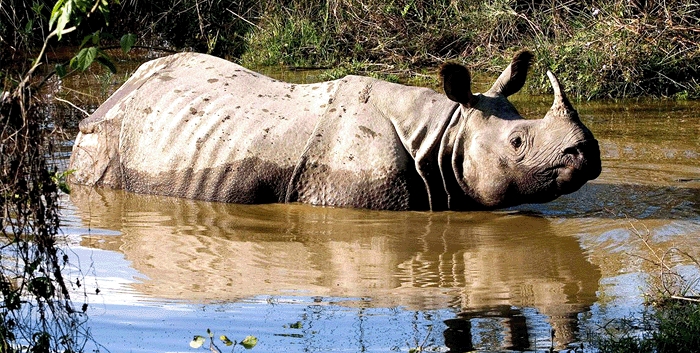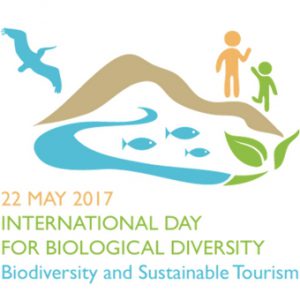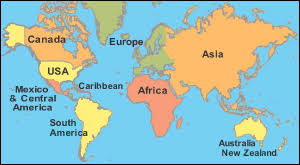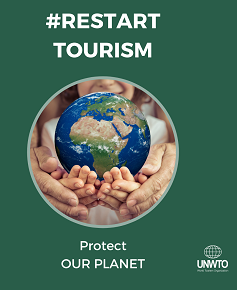Nepal celebrates ‘zero poaching year’ for rhino

Kathmandu : Nepal recently marked a successful year of species conservation by announcing that during the previous 365 days, not a single incident of rhino, tiger or elephant poaching had been recorded in any of the country’s protected areas.
While the year leading up to World Wildlife Day ( March 3 ) had been marked by huge increases in elephant and rhino poaching worldwide, Nepal’s Department of National Parks and Wildlife Conservation (DNPWC) stated that the last reported incident of rhino poaching in the country was on February 16, 2013.
“It is a huge achievement for Nepal that no rhino, tiger or elephant was killed during the last 365 days, which also shows the national-level commitment to control wildlife crimes in the country,” said Megh Bahadur Pandey, Director General of DPNWC. “It is a result of collective and continuous efforts of all national and international stakeholders involved in the conservation sector of Nepal.”
The successful recovery of the rhino, particularly in Nepal, is testament to the government’s strong commitment to biodiversity conservation and the effective implementation of conservation programmes. Partners at the national, regional and international level have collaborated on this successful conservation model.
“The success is a good example of combined efforts in protected area and species management, two core areas of IUCN’s work programme, and we are always keen to support DNPWC in its efforts to protect wild animals and their habitat,” said Dr Yam Malla, Country Representative of IUCN Nepal. “There is a need for greater regional and international effort and collaboration for the effective and long term conservation of the rhino and other endangered species in range states.”
Poaching and illegal wildlife trade have become rare in Nepal since its peace process began in 2005. Realising the need for support and cooperation between multiple sectors, the Government of Nepal recently established the Wildlife Crime Control Coordination Committee at the national level and the Wildlife Crime Control Bureau at the district level.
These institutions include representatives from the Nepal Army, Nepal Police – Central Investigation Bureau, civil society and high-level government officials in the conservation sector. The arrangement allows all concerned sectors to work together to control wildlife crime. In 2013 alone, law enforcement officials arrested more than 700 wildlife criminals in the country.
“We have developed strong community engagement programmes to involve people who live around the protected areas,” said Naresh Subedi, Member of the Asian Rhino Specialist Group of the IUCN Species Survival Commission.
“The high level to ground level commitments of the Government of Nepal, together with national and international support, has contributed to a drastic reduction in poaching pressures in Nepal.”
Despite this recent success, the large number of arrests in 2013 indicate that Nepal is still a major transit point for trade and the smuggling of body parts of endangered animals. According to the DNPWC between February 2013 and February 2014, police and other stakeholders managed to seize 1,200 grams of tiger bone, two rhino horns, a rhino toe, six leopard hides, and 11 red panda hides.
“The formation of the South Asia Wildlife Enforcement Network (SAWEN), a regional network of eight South Asian countries, has further helped to curb organized cross national wildlife crime,” says Dr Maheshwor Dhakal, Ecologist at DNPWC. “Different types of training provided by SAWEN for frontline staff and robust anti-poaching tools have become effective ways of controlling wildlife crime in Nepal.”
Fifteen years ago, Nepal had an estimated tiger population of 98, which increased to 198 according to the most recent census conducted last year, and it has committed to doubling this number by 2022.
The endorsement of the National Park and Wildlife Conservation Act in 1973 and its subsequent amendments has also further strengthened conservation efforts. The act lists the Greater One-horned Rhinoceros (Rhinoceros unicornis) as a protected species, with stiff penalties for killing or harming a rhino.
According to the 2011 rhino census, 534 Greater One-horned Rhinos are now found in Nepal; 503 of these occur in Chitwan National Park, 24 in Bardiya National Park and seven in Shuklaphanta Wildlife Reserve.
The Nepalese government seeks to strengthen its holistic approach to wildlife crime by continuing its strong collaboration with civil society and national and international organizations. – IUCN














